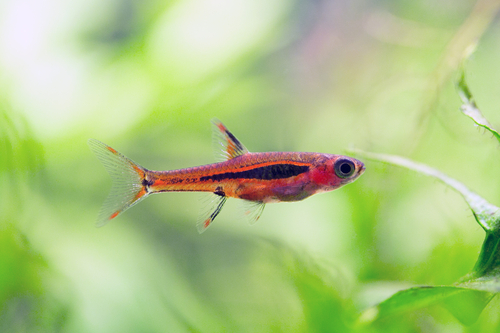Tiny red Chili Rasboras bring a flash of color as bright as a hot chili pepper to any community fish tank. Unlike the zingy nature of hot red pepper, this small tropical fish is a shy and gentle companion for many other small and peaceful fish species.
Great companions for Chili Rasbora fish include other rasboras, shrimp, Betta fish, Zebra Danios, several varieties of Gourami, Dwarf Catfish, Neon and Glowlight Tetras, and many more wonderful options.
Discover the 15 best Chili Rasbora Tank Mates to match with your favorite aquatic pet now.
Contents
What You Need to Know
Chili Rasbora fish are a beautiful addition to any tank. They are also perfect for beginners because they don’t require strict water temperature, hardness, or pH. In fact, Chili Rasboras do just fine with the range of water conditions required by most freshwater fish. They do prefer small gravel or sandy substrate, peat pellets or moss, and water that is acidic and on the softer side.
At the same time, it’s a good idea to decorate the tank with plants, rocks, or other ornaments to break up the strong current of water flowing from a tank’s filtration system. That’s because Chilis are just too tiny to swim against a vigorous current.
Otherwise, Chili Rasboras are an easygoing, straightforward fish species to care for and are safe among other small and placid fish.
Chili Rasbora Tank Mates
1. Harlequin Rasbora
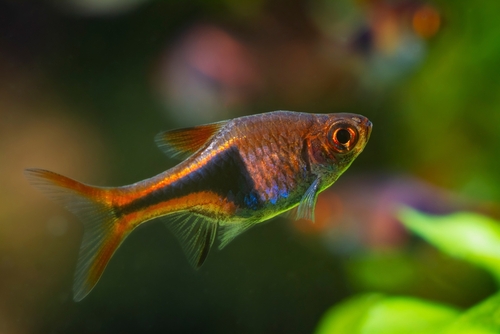
- Scientific name: Rasbora heteromorpha
- Origin: Singapore
- Size: Up to 2 inches (5cm)
- Care: Beginner
A Harlequin Rasbora is a friendly tank mate since it is related to a Chili Rasbora. These fish are elegant, with gold and red scales, and a distinct black mark near the base of the tail.
While Chilis need some plants to break up the current, avoid floating plants if you include Harlequins in the tank, since this can obstruct passage to the top of the tank where Harlequins use their labyrinth organ to breathe oxygen. Both their food and water needs are compatible with their Rasbora cousin.
Pros of Keeping With Chili Rasbora
- Resilient and adaptable
Cons of Keeping With Chili Rasbora
- They may fall prey to larger predators in the same tank
2. Crystal Red Shrimp

- Scientific name: Caridina cantonensis
- Origin: Taiwan
- Size: 1 inch (2.5cm)
- Care level: Intermediate to expert
Just like Cherry Shrimp, these unique shrimp have a colorful flair to a communal aquarium with their bodies striped like red and white candy canes. These popular shrimp land on the expensive side due to their interest and challenge due to their lower water temperature and hardness needs.
Pros of Keeping With Chili Rasbora
- They consume algae
Cons of Keeping With Chili Rasbora
- Pricey due to rarity and grade
3. Zebra Fish
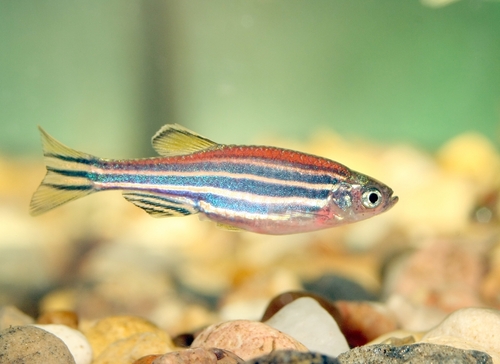
- Scientific name: Brachydanios rerio
- Origin: Bangladesh, Bhutan, and Pakistan
- Size: Around an inch (2.5cm)
- Care level: Beginner
Unlike a real-life Zebra, this Danio variety has black and white stripes that run horizontally along its body. These schooling fish like to go on adventures together around a community tank. Zebra Danios are also omnivores who thrive in the same water temperature, pH, and water hardness range as Chili Rasboras.
Pros of Keeping With Chili Rasbora
- Doesn’t require a lot of maintenance
Cons of Keeping With Chili Rasbora
- Might nip other fish if kept in a crowded tank
4. Cherry Barb

- Scientific name: Puntius titteya
- Origin: Cambodia
- Size: Up to 2 inches (5cm)
- Care: Beginner
In contrast to many of their other family members, Cherry Barbs are docile and slow swimmers who prefer to stick to their own school and who won’t make a fuss in a community tank.
Cherry Barbs are an easy mate for your Chili Rasbora because they are peaceful omnivores who do well in a similar water range but can adapt to fluctuations in conditions.
Pros of Keeping With Chili Rasbora
- Easy to care for and don’t require a large tank
Cons of Keeping With Chili Rasbora
- Susceptible to bacterial infections
5. Otocinclus Catfish
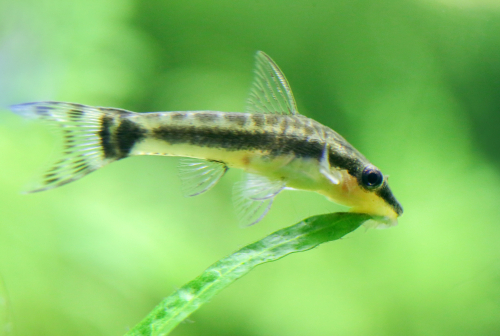
- Scientific name: Otocinclus macrospilus
- Origin: Argentina
- Size: About 2 inches long (5cm)
- Care: Beginner
A tiny catfish that hangs out at the bottom of the tank won’t take up much space physically or compete for territory with your Chilies. Many of them come in gold or silver shades to add a glint of interest to the substrate.
These fish come alive during the night, so it’s important to scatter some worms, algae wafers, or blanched veggies for them after hours.
Pros of Keeping With Chili Rasbora
- Excellent for cleaning algae and plankton
Cons of Keeping With Chili Rasbora
- Can get stressed if crowded or doesn’t get enough food due to nocturnal feeding schedule
6. Dwarf Gourami
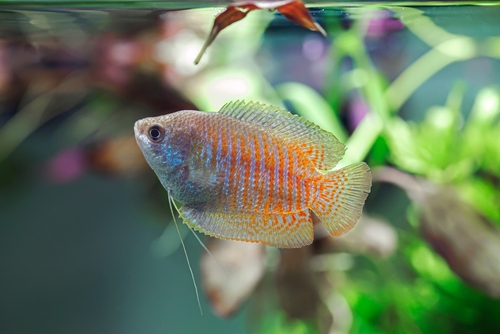
- Scientific name: Trichogaster Ialius
- Origin: Bangladesh
- Size: About 3 inches (7cm)
- Care level: Basic
Dwarf Gourami fish come in gold, red, baby blue, neon, and rainbow colors. They are placid fish that are compatible tank mates due to their similar water requirements. It’s important, however, to keep tank water fresh to keep their labyrinth organ healthy.
Pros of Keeping With Chili Rasbora
- Easy diet
Cons of Keeping With Chili Rasbora
- Requires strict water conditions
7. Pearl Gourami

- Scientific name: Trichopodus leerii
- Origin: Indonesia
- Size: 4 inches (10cm)
- Care level: Beginner
Whether you call the Mosaic or Lace Gourami, these pearly fish are popular tank mates for Chili Rasbora fish. Since they need the same kind of environment and consume any kind of fish food, they are ideal for aquarists looking for a low-maintenance pet.
Pros of Keeping With Chili Rasbora
- Low-maintenance fish
Cons of Keeping With Chili Rasbora
- Can tend to get fin rot
8. Neon Tetra
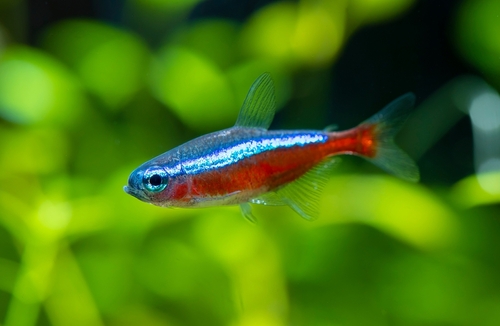
- Scientific name: Paracheirodon innesi
- Origin: Peru
- Size: Close to 1 inch (2.5cm)
- Care: Beginner
A neon tetra adds a dash of life and color to any community tank. For beginner aquarists, this is an easy fish to keep since it doesn’t require a lot of maintenance or has precise water requirements.
You’ll want to make sure to get a school of a dozen or more fish and create a homey environment full of floating plants and rocks where they can tuck away. Since these fish have super tiny mouths, you’ll need to break fish food into crumbs to feed them.
Pros of Keeping With Chili Rasbora
- Can live a long time with good care
Cons of Keeping With Chili Rasbora
- Light-sensitive and may get stressed in a bright or crowded tank
9. Glowlight Tetra
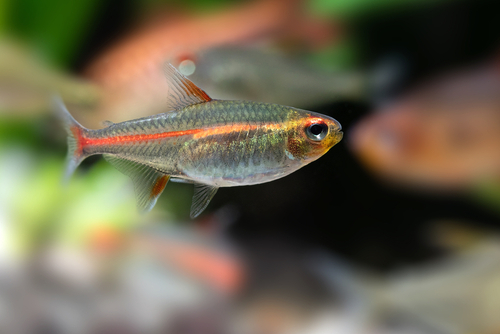
- Scientific name: Hemingrammus erythrozonus
- Origin: South America
- Size: A little over 1 inch (2.5cm)
- Care level: Easy
A Glowlight Tetra has a sparkling transparent bluish-gold body with a thick red line through the center. They are bright, active, and playful tank mates who enjoy a tank with light filtered by floating vegetation or leaf litter.
They prefer water that is slightly harder than the Chili Rasbora’s range, but the Rasbora tends to be slightly adaptable to condition fluctuations.
Pros of Keeping With Chili Rasbora
- Easy for beginners
Cons of Keeping With Chili Rasbora
- Can get eaten by larger or more aggressive fish
10. Dwarf Pencilfish

- Scientific name: Nannostomus Marginatus
- Origin: Amazon River in Peru
- Size: About 2 inches (5cm)
- Care: Beginner
These fish come from the Amazon River basin and are non-aggressive tank mates for Chili Rasboras.
While they can adapt to variations in water chemistry, they do need gentle filtration with soft, acidic water and a dark-colored substrate to keep them calm. These fish also tend to jump out of the water, so it’s best to put a lid on the tank to keep them from catapulting out (if you don’t have a labyrinth fish that needs to come up for air).
Pros of Keeping With Chili Rasbora
- Can tolerate a wide range of water conditions
Cons of Keeping With Chili Rasbora
- May act shy and difficult to feed if other tank mates crowd the food source
11. Endler’s Livebearer

- Scientific name: Poecilia wingei
- Origin: Venezuela
- Size: 1 inch (2.5cm)
- Care: Easy
If you want a compatible Chili companion that will wow your visitors, look no further than this glittery gold, silver, and blue fish with fancy black markings. This species is sometimes bred with guppies to create an Endler’s hybrid guppy. They love to interact with people, but shouldn’t be kept with more aggressive species such as cichlids.
The range for temperature, pH, and water hardness (KH) matches with Chili Rasboras.
Pros of Keeping With Chili Rasbora
- Don’t tend to get diseases
Cons of Keeping With Chili Rasbora
- Difficult to get a pure-bred fish
12. Betta Persephone
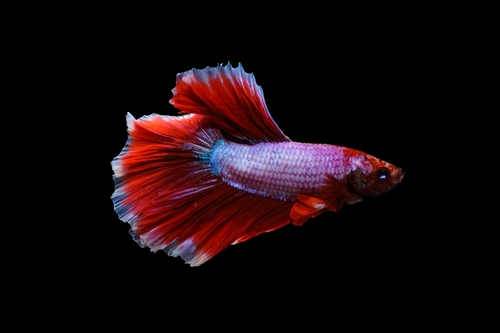
- Scientific name: Coccina complex
- Origin: The Malay Peninsula
- Size: 1 inch (2.5cm)
- Care level: Expert
Named for the Greek goddess of harvests, fertility, and the queen of the underworld, this fish is a deep purplish-brown color with fantastic glowing jewel-blue and green fins. It’s also an endangered species, which makes it rare to find in a tank mate collection.
Unlike other kinds of Siamese Fighting Fish, the Betta Persephone is a gentler Betta that won’t harm Rasboras. It’s important to use expert care when balancing the water chemistry since these fish are extremely sensitive to any changes that don’t suit their delicate needs.
Pros of Keeping With Chili Rasbora
- Peaceful nature
Cons of Keeping With Chili Rasbora
- Rare and difficult to get water parameters right. Expert tank jumpers.
13. Licorice Gourami
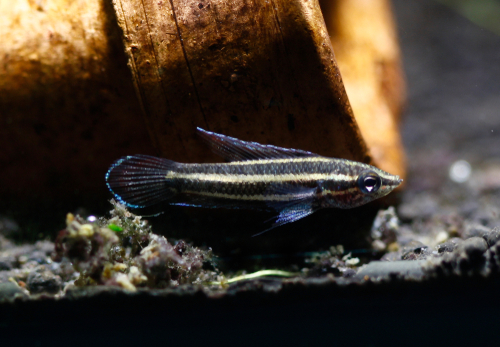
- Scientific name: Parosphromenus harveyi
- Origin: Indonesia
- Size: 2 inches (5cm)
- Care level: Expert
Neon blue edges on a black and white horizontal striped body give this shy fish an exotic flair. They are delicate and endangered, so their care, including water chemistry, needs an expert aquarist’s touch.
Pros of Keeping With Chili Rasbora
- Beautiful scales and placid nature
Cons of Keeping With Chili Rasbora
- Hard to find due to rarity.
14. Rosy Loach
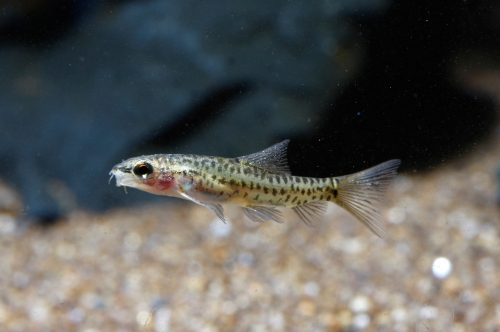
- Scientific name: Petruichthys sp
- Origin: Myanmar
- Size: 1 inch (2.5cm)
- Care level: Expert
Big eyes and a black and amber body characterize this tiny tank mate. As schooling fish, they like to stay in groups of at least half a dozen fish.
Rosy Loaches are typically caught from the wild, so they are often in bad shape once you get them from a pet store. They need water chemistry that is dialed in specifically for their needs. It’s important to add them to a mature tank that is prepared for their requirements since they don’t handle environmental fluctuations too well.
Pros of Keeping With Chili Rasbora
- Active and docile
Cons of Keeping With Chili Rasbora
- Often arrive in poor shape
15. Toucan Tetra
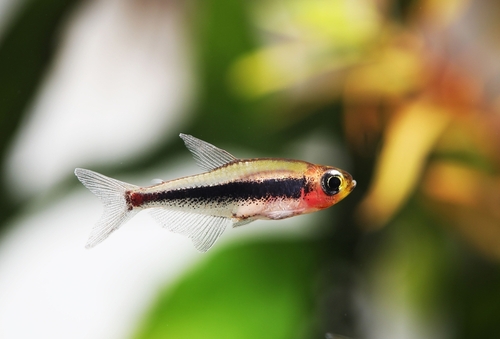
If you can lay your hands on a Toucan Tetra, these little schooling fish are a rare aquarium find.
These fish can tolerate a wider range of water chemistry conditions which makes them ideal tank mates for Chili Rasboras.
Pros of Keeping With Chili Rasbora
- Peaceful
Cons of Keeping With Chili Rasbora
- Often hard to find in the U.S.
Final Thoughts
Chili Rasboras make fantastic community tank pets. They are also flexible to some extent when it comes to water conditions, which enables aquarists to adjust water conditions more strictly for finicky fish.
Just make sure to add non-aggressive fish that won’t stress or eat your Chili Rasboras. As always, schooling fish are happiest and safest when kept in a large enough school.
FAQs
Are Chili Rasboras Good as Community Fish?
These schooling fish love to spend time together in a big group of a minimum of 8 to 12 fish. Since they are minuscule fish, they can feel shy and afraid to swim out into the middle of the tank unless they’re in a group.
This is a good way to observe how they swim, play, and interact since they can be hard to spot in twos and threes and act timid when alone. They are docile and non-aggressive, so they’re perfect fish for a communal tank.
Also read:
- Kribensis Cichlid Tank Mates
- Golden Severum Tank Mates
- Silver Arowana Tank Mates
- Swordtail Tank Mates
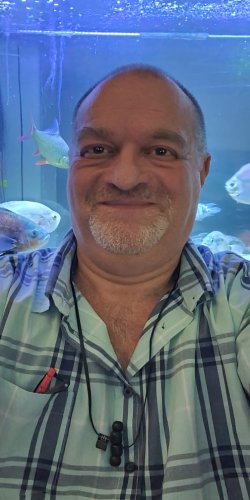
Veteran fish keeper and keen hobbyist with a serious case of MTS. My midlife crisis was the establishment of a fish room, much to my wife’s horror. Little does she know it could be worse!!


